Although the sporting and technical regulations were largely rolled over from F1’s 2020 ‘Covid’ season – although minor changes did cause some headaches – during 2021 the teams grappled with another regulatory variable, namely the financial regulations, or ‘budget cap’ in popular parlance, that were finally introduced after a protracted gestation period.
Under consideration even before Liberty Media gained control of F1’s rights in 2017, the budget cap restricts spending in performance-critical areas order to level the playing field. Three main areas are targeted, namely car design and development, car and component manufacture, and testing and race operations – with spend in these areas restricted to $145m, reducing by $5m per annum in 2022/3.Exclusions to the cap are marketing and hospitality costs, team travel – primarily to prevent cutbacks on the standards of accommodation and flight classes – and car demonstrations and heritage (museum) operations. Crucially, despite drivers being a major performance differentiator their wages are (currently) excluded from the cap, in turn enabling better-funded teams to gain a distinct advantage from this quarter.
Equally, the top three salaries paid to team personnel are also excluded, enabling the wealthier outfits to recruit and retain superstar designers or strategists at wage levels these are able to command. Still, the cap redresses some imbalances, although such are the facility and operational advantages accrued by major teams that, according to AlphaTauri team boss Franz Tost, their momentum will carry them for three years, at least.
“There will still be mismatches in facilities and things for a little while,” believes McLaren technical director James Key, “but as things begin to settle down and coalesce between teams I think you’ll begin to see much more of the performance engineering influence than what we’ve been used to as a financial influence.”
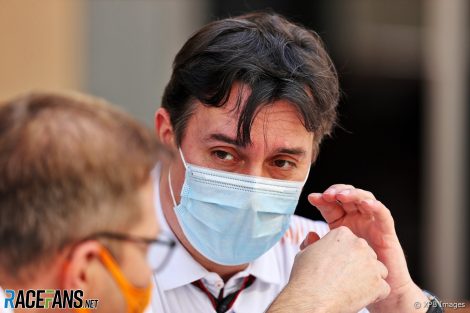
Then, though, came Covid, forcing F1 to reduce the planned cap by $30m and simultaneously roll over the existing cars on cost saving grounds. While these moves likely saved various teams from bankruptcy and arguably saved F1, the bottom line is that they threw F1’s plans for an orderly transition out of the windows situated on the top floor of the FIA’s building at 8 place de la Concorde, Paris and onto the square below.
Still, the governing body had little choice but to act swiftly and decisively and deserves enormous credit for not only the way it quickly got all teams onside despite the effects the further, unplanned cuts would have, particularly on the big three. Indeed, they, too, deserve praise for having put the survival of F1 ahead of their interests by cutting their own staff numbers. That proves how acute the need was.
“[The revised] cap cannot be achieved without further significant sacrifices, especially in terms of human resources,” said Ferrari team boss Mattia Binotto at the time. “However, if the current situation puts the existence of some of our competitors in this sport in doubt and make it necessary to revise certain cornerstones, then Ferrari would be open to it.”
Advert | Become a RaceFans supporter and
After much argy-bargy – and a six-month glide path to June 2021 to ensure all statutory requirements were met – the larger teams thus accepted budgets under which they would not only operate their 2021 cars but simultaneously design, develop, and commence manufacture of their 2022 cars – any work on which was outlawed until 1st January 2021 to prevent them sliding design and development costs aimed at 2022 ‘under the table’.
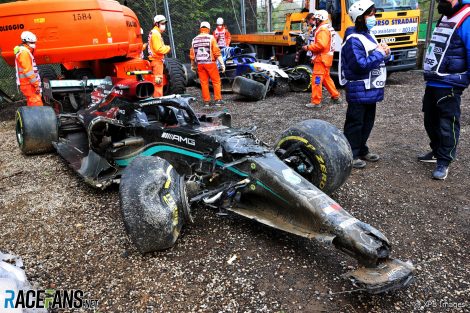
“We are trying to make the budget cap, which is not trivial, and we couldn’t take the costs related to the tyre test and we wouldn’t have been able to send our mechanics on such a long journey,” he said, adding that the estimated $1m costs of damage from Valtteri Bottas’ Imola crash had tipped the balance.
Ferrari stepped into the breach, with Binotto saying, “As Ferrari we always said that 2022 is our priority over 2021. Testing Pirelli tyres, helping Pirelli develop the new tyres, we believe is important for us. Luckily enough, we didn’t have a crash in Imola so eventually we have some more contingency to Mercedes today, so we are happy to accept and support.”
The unstated implication is, though, that Ferrari had to pick and choose between 2021 and 2022, whereas in the past the team would have given both season’s equal status. “No compromises have been done in developing 2022 cars…so we compromised the 2021 car,” the Italian later admitted.
To ensure that employees grasp the full implications of the financial regulations, teams ran internal training courses for staff at all levels to reinforce the need to save in all areas. Still, considerable financial juggling was required to ensure maximum efficiencies, with savings made in one area – such as freight costs – enabling other activities such as car performance to benefit.
“In my specific area the main impact is the freight,” said McLaren executive director of racing, Andrea Stella. “This isn’t an operational element of going racing that’s sometimes not in the spotlight, but actually is a considerable opportunity to generate savings and efficiency.
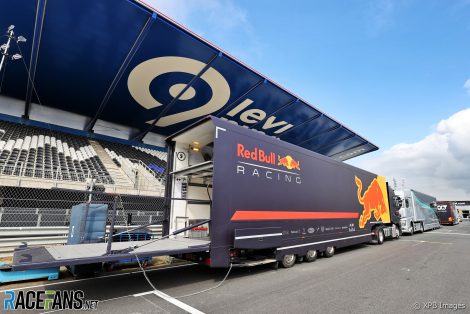
However, as always in F1 there is no gain without pain, as Binotto admits. “With the financial regulations we cut some of the development and cut parts of our organisation. When you’ve got a cap, you need to limit yourself.”
Key stresses that McLaren has needed to be more cautious with its materials selection process: “We’ve done a lot of work on seeing what alternatives there are, in certain areas, trying to make sure that we’re not ‘over engineering’. There are some carbon fibres, which are very expensive but very effective, and you sort of default to them knowing that your part will work as intended.
“It adds a layer of workload and complexity onto material selections, but it’s the right thing to do to reduce costs.”
Advert | Become a RaceFans supporter and
The 2022 overhaul also includes changes to the sporting regulations as part of F1’s cost saving ethos, including a reduction to three-day race weekends, meaning teams need to pack the same workload into one day less. This, too, has complicated Key’s task as the cars ideally need to be simpler to work on, in turn saving money.
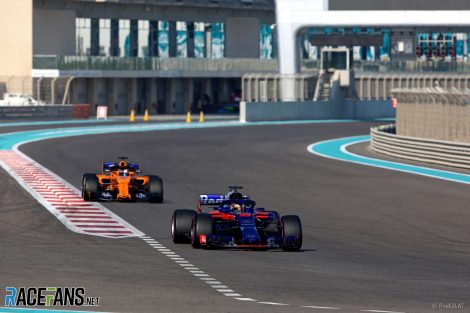
Having worked for a number of independent teams before joining McLaren, Key has seen first-hand the effects of cost restraints. “I’ve seen how much efficiency you can gain by thinking in a different way, trying to extract maybe 80% [performance] out of 30% of the cost.
There are definitely ways of working which are kind of smart and to the point and prioritised and lean and kind of aggressive and agile. That’s where you need to be under the cost cap.”
It was, though, a massive balancing act, with Key admitting that restructuring the technical department to meet the cap was no easy task.
“There was an element of restructuring we had to go through with the team, but we tried to minimise [staff losses and disruption] as best we could because obviously we wanted to save the workforce we had, we wanted the team to be internally recognisable, because it settled down into a rhythm of work now with various groups operating very well together,” he says.
“We didn’t go through a massive restructure or a huge rehash in the way the team operates; we just looked at the sensible directions.
“We needed to find efficiencies and found many efficiencies. Disrupting the team would have been counter to what our objectives are longer-term. We played a very careful balancing act between the size of the team and other budgets. We’ll see if we got it right next year, more so than this year…
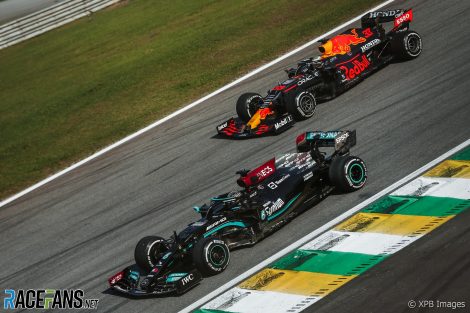
In terms of the financial regulations, all teams are required to supply full reporting statements – containing all the information required for the full operating year as outlined in the regulations – plus any declarations they may wish to table by 19:00 CET 31st March of the subsequent year. In addition, the FIA reserves the right to impose spot-checks at any point during the year.
“There’s quite a lot of checks going on,” Alpine executive director Marcin Budkowski told RaceFans in Jeddah. “We get regular visits from the FIA, regular requests for data and for information. Probably more than we were expecting and they are at very short notice and including surprise visits to the factory. We are very happy about it, because that’s how it should be and that’s how it should be policed.”
McLaren team principal Andreas Seidl concurs. “I see no red flags,” he said. “I’m very happy with the entire process that is in place at the moment, regarding enforcing the budget cap or the financial regulations.
“I have full trust in the system that is in place and in the FIA, and that if there is a breach, depending on what the breach is, there is the right penalty for it.”
However, the acid test will not be whatever outcomes arise from the adjudication process, but rather any penalties that are applied should a team be found in breach of any area of the financial regulations.
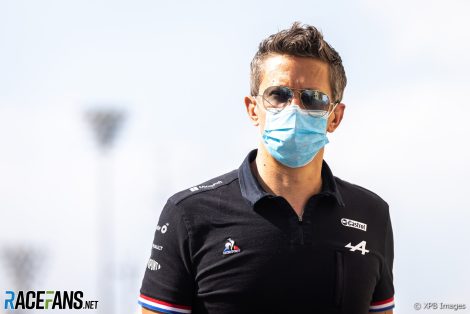
“The regulations, as they are written, don’t specify what the penalty is for [a specific] breach,” says Budkowski. “The reason they are not defined is that as soon as you define a penalty teams start to calculate whether [a certain interpretation] is the right thing to do or not.
“If you know you risk a five-second penalty in a race for track limits or something like that you make a call whether it’s better to serve your penalty or not, then build a gap to gain an advantage.
That’s exactly what the regulations are trying to prevent. We haven’t seen any breaches yet, we haven’t seen any sanctions yet, so we will see effectively if it happens, but hopefully it won’t be necessary, and everybody will respect them.”
RacingLines
- The year of sprints, ‘the show’ – and rising stock: A political review of the 2021 F1 season
- The problems of perception the FIA must address after the Abu Dhabi row
- Todt defied expectations as president – now he plans to “disappear” from FIA
- Sir Frank Williams: A personal appreciation of a true racer
- F1 should spare us the 20-hour steward debates and ‘Judge Judy’ antics




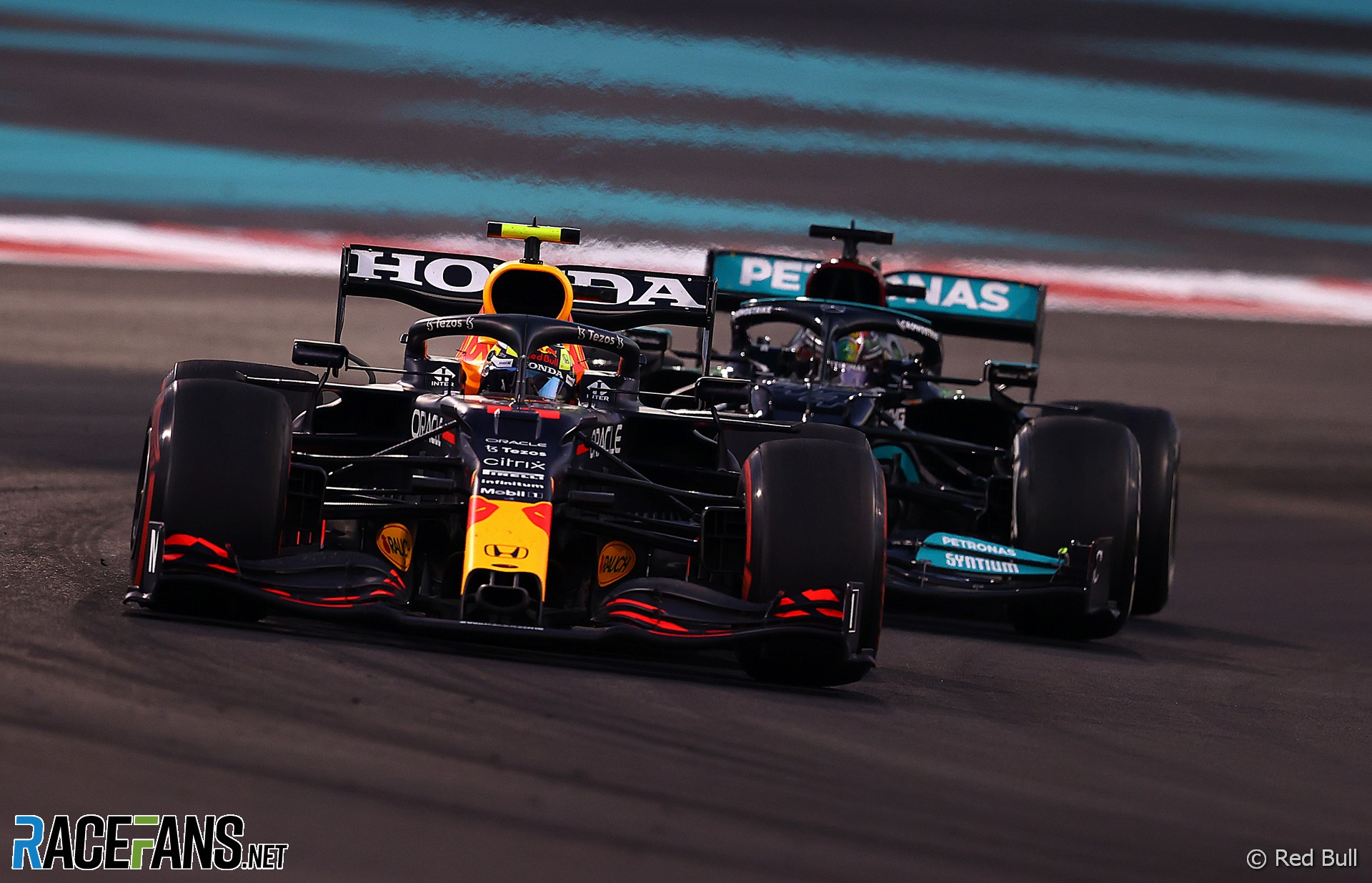
Proesterchen (@proesterchen)
15th December 2021, 12:11
Don’t you love it when in a wildly profitable undertaking, a commercial rights holder and 10 companies conspire to gain ultimate power over people’s wages, resulting in escalating valuations for the former 11, and significantly reduced employment opportunities for the latter?
Napier Railton (@napierrailton)
15th December 2021, 12:19
That’s one of the reasons why F1 needs more teams.
Khurt L Williams
15th December 2021, 13:06
I read this article, and I thought the same.
MichaelN
15th December 2021, 13:22
While that is an issue, it has also created opportunities elsewhere. For example, it seems doubtful Ferrari would be returning to the top category at Le Mans with a works team in 2023 if F1 had not adopted this new system.
Mark Zastrow (@markzastrow)
15th December 2021, 18:14
Yes, that, and Mercedes, Red Bull, and potentially Ferrari all jumping into the America’s Cup. Really looking forward to that.
RandomMallard
16th December 2021, 8:57
@markzastrow +1. Really looking forward to the next America’s Cup. Don’t forget Pirelli are a title sponsor of Luna Rossa (Italy) as well, so the F1 contingent is very strong there at the minute
OOliver
15th December 2021, 17:23
This is a lot better than Eccleston valuing a new Redbull team than all other teams but Ferrari and were paying them handsomely for it. Even after 3 Seasons of winning the championship, Mercedes were still getting less than Redbull in payment s.
Pozzino (@pozzino)
15th December 2021, 18:49
Yep, exactly what is happening. Cost cap meant salary freeze and sprinkle on top a 4% inflation
Napier Railton (@napierrailton)
15th December 2021, 12:26
The budget rules have made next season very hard to predict. The biggest teams who normally get their advantage from their much larger budgets no longer have this advantage.
Mercedes and Red Bull have no doubt been putting more effort into this season than next season’s car development. They have the talent, but now they don’t have the financial muscle that they had before, can they keep their advantage? Especially when they can’t draw from past successes to ensure their car is still fast.
This gets more complicated when we look at the fact that teams like Alpine and McLaren have been focussing nearly 100% of their development time into the new regulations.
The new rules and the financial restrictions coming into effect for car development for 2021/22 could result in a massive shake-up.
I’m going to stick my neck out here and say that Mercedes or Red Bull wont be leading the field in 2022
Christopher Rehn (@chrischrill)
15th December 2021, 12:55
With there also being increased aero time for teams lower down, I think Ferrari could be a threat in 2022. I’m a Ferrari fan, so I’m not neutral here, but their 2020 position gave them a lot of time to focus on 2022 and the current car has looked identical for a very long time except an engine upgrade which puts Ferrari up there with Mercedes and Honda on engine capacity.
I do still see Red Bull and Mercedes as favourites for 2022, simply because they have attracted top talent for many years and should simply have a competitive edge in terms of the people working for them.
Todfod (@todfod)
15th December 2021, 13:24
@napierrailton
Man.. I really want to agree with you. In theory, you might be right, teams like Ferrari, Mclaren and Alpine, who’ve put a lot of 2021’s resources in to their 2022 car should have the upper hand. They’ll also get more windtunnel time as compared to Mercedes and Red Bull, however, a few of the key personnel aren’t included in this budget cap, which would include Adrian Newey, James Allison and some other head honchos, Red Bull and Mercedes still keep their top dogs in the new era.
I also think that 2022 will be the year of loopholes in the budget cap. Red Bull and Mercedes will be finding different ways to employ consultants and 3rd party service providers without any transparency and accountability. I’d love to think that Ferrari and Mclaren will come out of the pack strong.. and Alpine in the mix too (although I have zero faith in Alpine producing a winning chassis and Renault in making a half decent engine).
If you ask me, I think Ferrari and Mercedes will be strong out of the box, followed closely by Red Bull and Mclaren, who will develop over the season to join the battle for wins. Alpine to remain 5th.
Jere (@jerejj)
15th December 2021, 15:58
@napierrailton Mercedes did very little development overall. Perhaps Red Bull had more mixed balance.
Like @todfod, I reckon Mercedes & Ferrari could come out strongly, given how early they started focusing on next season.
I’m more confident about Ferrari than Mclaren & Alpine. Time will eventually tell.
OOliver
15th December 2021, 17:02
Could that be the reason Redbull were desperate to win this title at any cost. Being very nasty to their competition. Then suddenly jovial and generous after they were handed the win.
Red Andy (@red-andy)
15th December 2021, 12:36
When budget caps were first being discussed at the tail end of the Mosley era, we had no end of self-satisfied pundits (both of the professional and armchair variety) dismissing the idea because it was “unenforceable.” I guess we’ll finally see whether they were right after all.
Ciaran (@ciaran)
16th December 2021, 12:13
The 2009 breakaway threat feels very far away these days doesn’t it!
AdrianMorse (@adrianmorse)
15th December 2021, 13:01
I wonder whether Mercedes will exceed this year’s budget cap with all their legal costs, or whether those were, in fact, already budgeted :-)
erikje
15th December 2021, 13:08
Both teams kept developing until the last race. A lot of nonsense stories about not developing anymore by Mercedes were factual not true.
Redbull already showed their commitment to this season B developing also until the last race.
Both teams had a high repair bill as a result of accidents.
So both teams will have a swindelingc cost cap for the 2022 car. But both teams have the best design and production facility’s and enormous experience.
So it will be very entertaining to see the februari testing.
And of course curious to see how the new team boss will steer Mercedes.
Jere (@jerejj)
15th December 2021, 16:01
@erikje They stopped (as did all teams) wind tunnel development early on – by the summer break at the very latest.
OOliver
15th December 2021, 17:06
Because you said it or must be correct.
Championship is over and you are still fighting Mercedes. Look at how Horner smiled when Lewis congratulated them on the win, you could be forgiven for thinking it was his sister’s child.
Nell (@imabouttogoham)
15th December 2021, 23:06
A true keyboard warrior
Coventry Climax
15th December 2021, 13:48
The unspecified penalties for rules breaches are -again- source for arbitrary decisions and, thus, controversy.
I strongly disagree with Budkowski over the reason for the lack of them. If you don’t want the teams to make the decision to take the penalty assigned to a certain breach because the advantage outweighs it, then the severity of the penalty is wrong, and the wording of the rules and penalties is wrong.
You’d say the penalty should at all times be higher than the benefit gained (includes financially, as per cost-gap) by breaching the rule.
Crash-gate and its penalties come to mind as a good yet unfortunately, rare example.
The other thing that will without any doubt be cause for future controversy again, is the FIA’s lack of means, either financial or in expertise, to effectively monitor that the rules are obeyed.
I can still hear Todt saying he’d like less controversy. Well, he didn’t succeed there and good luck to his successor.
–already posted this -1 word difference- but that still awaits moderation..
Tristan (@skipgamer)
16th December 2021, 0:07
Really good post.
jamt
15th December 2021, 14:07
I was expecting to read some words about the PU usage and, in particular, Mercedes’s 2021 strategy. That is clearly an issue that should be regulated.
OOliver
15th December 2021, 17:13
No body said anything when Honda were using 15 to 20 engines a year and dropping only 5 places. Mercedes just took only one engine and there is an uproar.
Wasn’t it the constant testing that got Honda this very powerful engine this year.
How can we be sure Mercedes were not hiding a likely potential for failure so as not to give their competition the advantage and force them to push the weak engines harder.
juan fanger (@juan-fanger)
15th December 2021, 21:31
If the rules are followed then there shouldn’t be a problem if Mercedes take a new engine at a venue where it is easy to overtake.
What may be a problem is that Mercedes the racing team get a different deal to other racing teams that use Mercedes powertrains. When Hamilton or Bottas want a new one then Brixworth supply it at the best strategic venue. When Norris or Ricciardo want a new one does Brixworth say “No worries!” or do they say “Nah mate, nothing wrong with that one. Keep using it. What’s half a second a lap between friends.”
Nell (@imabouttogoham)
15th December 2021, 23:08
Loophole. I think Mercedes will have this advantage, and also the fact that despite a supposed engine freeze, there will still be carryover of knowledge from previous years to 2022 and beyond. I don’t know if the Red Bull engine department is simply Honda guys being paid by Mateschitz or if it’s more from scratch.
Martin Elliott
15th December 2021, 14:38
Did you notice the FIA philosophy of penalties?
Whilst a ranking is defined, actual application to offence is not. Because they don’t want teams doing a Cost Benefit Analysis!!
Sound familiar? Yes just like the F1 Sporting Regulations. Of course, there has to be some level of consistency, so a ‘Stewards Handbook’, which isn’t published, but seems available to teams, gives ‘sentencing guidelines.
Is that Handbook approved formally by the FIA Regulatory Committees.
Under most National Legal systems it would have to be approved and published.
In UK an obvious example is the Highway Code, but under HSW Act there are many Approved Codes of Practice and Codes of Practice. Not ‘laws;, but quoted in court.
OOliver
15th December 2021, 17:15
We saw it work in the final race. A team could be forced to race with only one Tyre all race or with half fuel
Yes (@come-on-kubica)
15th December 2021, 14:47
Come on Haas.
Alec Glen (@alec-glen)
15th December 2021, 15:00
Red Bull will be there or thereabouts. I mean, their designer still works with pen and paper which can’t cost that much :)
Steven Robertson (@emu55)
15th December 2021, 15:37
I have no idea how any of this will be monitored, I have a horrible feeling the best car of 2022 will be the one which bended these financial rules the most.
OOliver
15th December 2021, 17:20
However it’s monitored is going to be expensive. Team costs go down, FIA costs go up. A few tens of millions spent just to conclude everything is fine.
Dave
15th December 2021, 20:04
So does that mean the winner of the championship remains provisional until the middle of the following year pending any unspecified sanctions which may be handed down? Rather than a delayed decision as to who is the 2021 champion perhaps we’ll look back on 2021 as the last time the winner was known before the next season began!
Mjbdca
15th December 2021, 21:32
How much does Merc or Ferrari charge itself for engines? Merc went through 11 while their customers went through about 8.